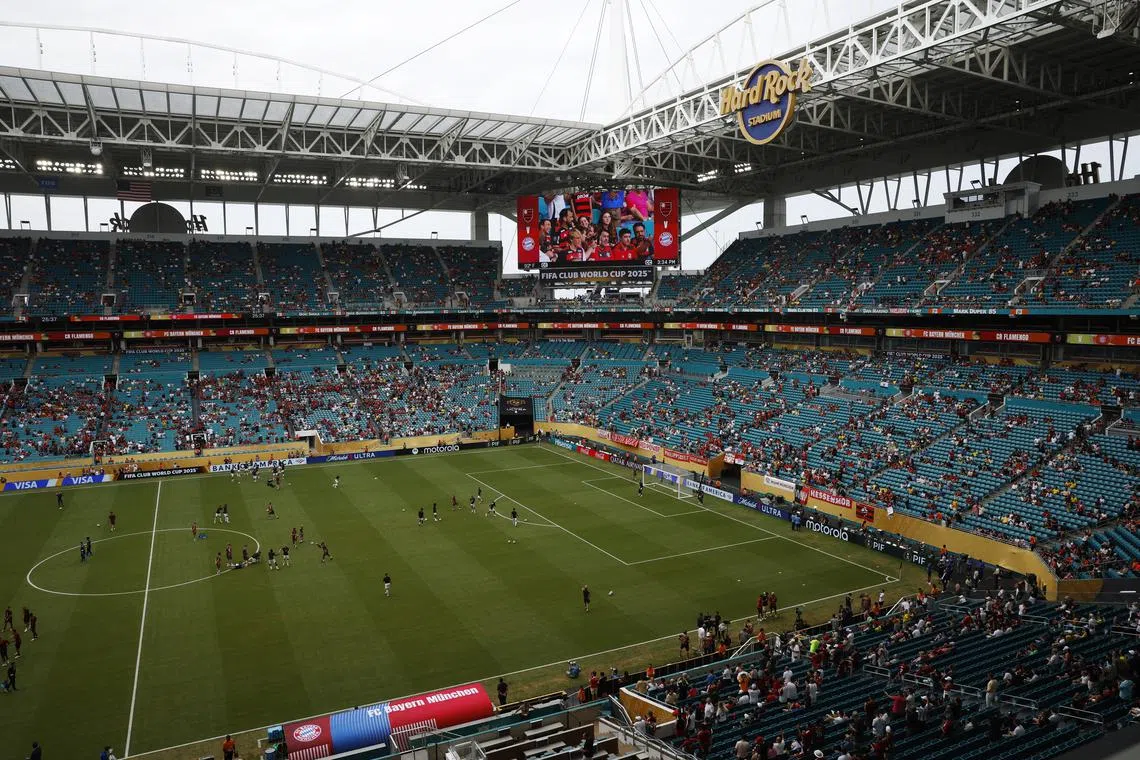Underdogs and heat dominate debate as Club World Cup enters final stages
Sign up now: Get the biggest sports news in your inbox

What many expected to be a European-dominated affair has instead seen shock eliminations of Uefa Champions League heavyweights.
PHOTO: REUTERS
Follow topic:
PHILADELPHIA – The inaugural expanded Club World Cup has delivered a spectacle on the pitch, with underdog triumphs and captivating support from South American and Arabic fans.
However, concerns over player welfare and lukewarm attendances in the United States have sparked debate as the tournament approaches its final stages.
What many expected to be a European-dominated affair has instead seen shock eliminations of Uefa Champions League heavyweights.
Brazilian sides Flamengo, Botafogo and Fluminense, alongside Saudi Arabia’s Al-Hilal, have scripted some of the 32-team tournament’s most thrilling stories.
Fluminense stunned Inter Milan with a 2-0 win in the round of 16, while Al-Hilal delivered a seismic upset by knocking out Pep Guardiola’s Manchester City.
Lionel Messi’s Inter Miami also played their part earlier in the tournament, defeating Porto 2-1 in the group stage – ending a 13-year unbeaten run for European teams against clubs from other continents in the competition.
Meanwhile, Botafogo and Flamengo claimed memorable group-stage victories over Champions League winners Paris Saint-Germain and Chelsea respectively, while Palmeiras secured their quarter-final berth with a dramatic extra-time win over Botafogo in an all-Brazilian clash.
While the on-field action has enthralled the fans, challenges off the pitch have raised eyebrows.
The American summer’s extreme weather – scorching heat and unexpected thunderstorms – has disrupted matches and raised serious concerns ahead of the 2026 World Cup, which will also be held in North America.
The soaring temperatures and oppressive humidity have fuelled major complaints from players and coaches and have global players’ union Fifpro exploring whether extending half-time to 20 minutes and introducing more frequent cooling breaks could better protect players from extreme heat.
Nine of the 16 host cities for the World Cup in the US, Canada and Mexico face conditions considered “extreme risk” for heat-related illness, posing player safety concerns and fuelling calls for more mandatory cooling aids during matches or schedule changes.
“Heat conditions are a serious topic that affect football globally,” Fifa told Reuters.
“Discussions on how to deal with heat conditions need to take place collectively... The protection of players must be at the centre.”
With the semi-finals and final scheduled for 3pm local time at New Jersey’s MetLife Stadium, where temperatures could reach 32 deg C, the heat debate is set to intensify.
Suggestions for 2026 include scheduling midday games in covered stadiums to combat heat stress. Thunderstorms have also caused disruptions, with matches suspended as players left the pitch and fans sought shelter.
Chelsea manager Enzo Maresca criticised having the US as hosts after a two-hour weather delay marred his team’s last-16 win over Benfica in Charlotte.
Their knockout match in a half-empty stadium of under 26,000 at the start showed how attendances have also been underwhelming for matches involving European clubs, with South American and Arab fans providing much of the tournament’s vibrancy.
Despite the excitement on the pitch, Fifa’s website still lists plenty of tickets available for remaining games, including next week’s semi-finals and the July 13 final, raising questions about the tournament’s broader appeal in the US.
As Fifa reflects on the Club World Cup’s successes and challenges, the lessons learnt will be critical in shaping the path to the 2026 World Cup, where similar issues may loom large. REUTERS

